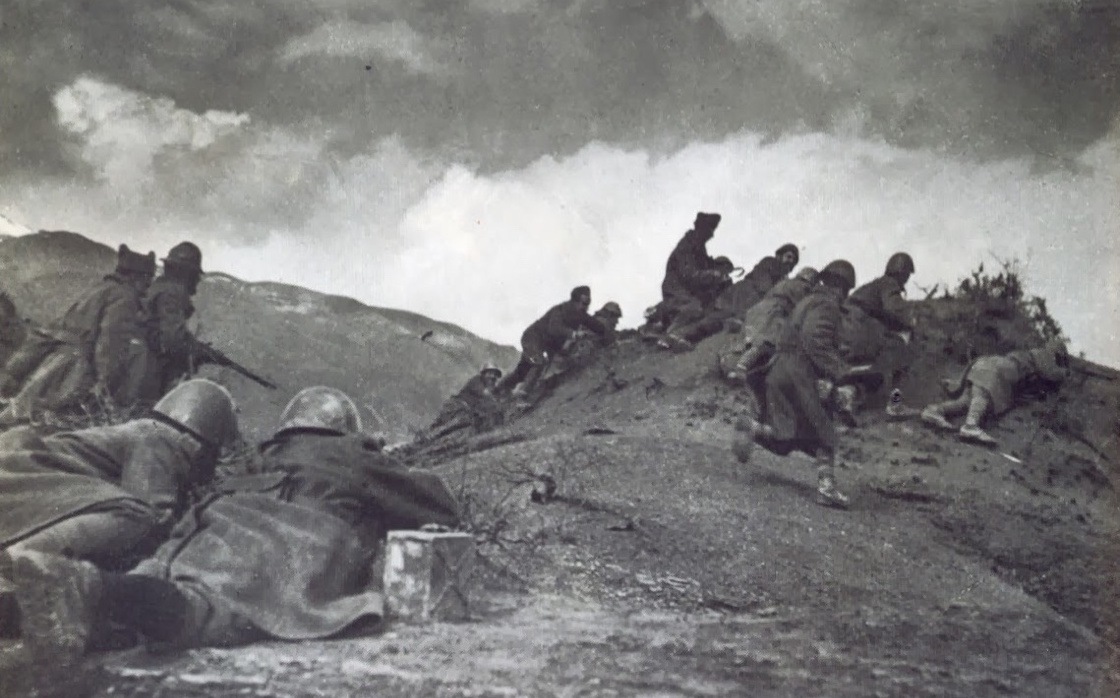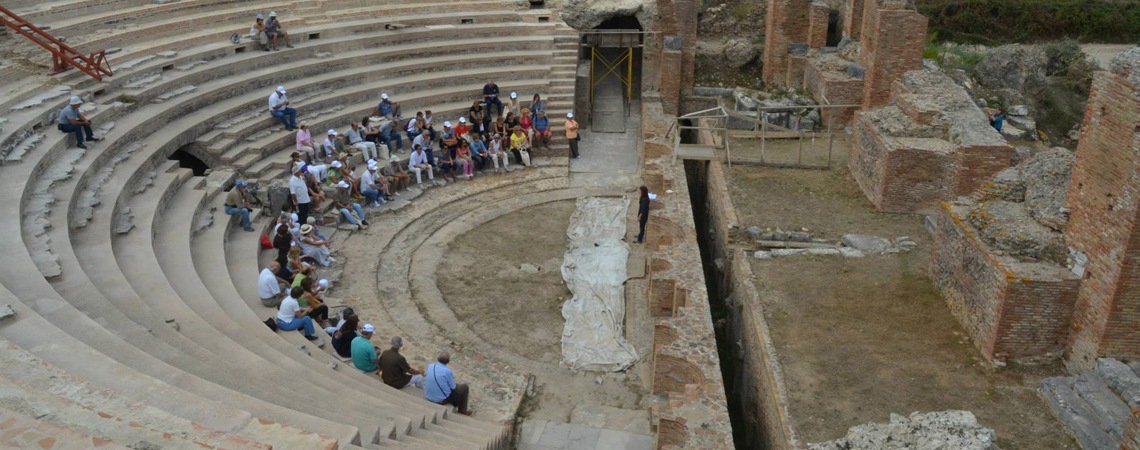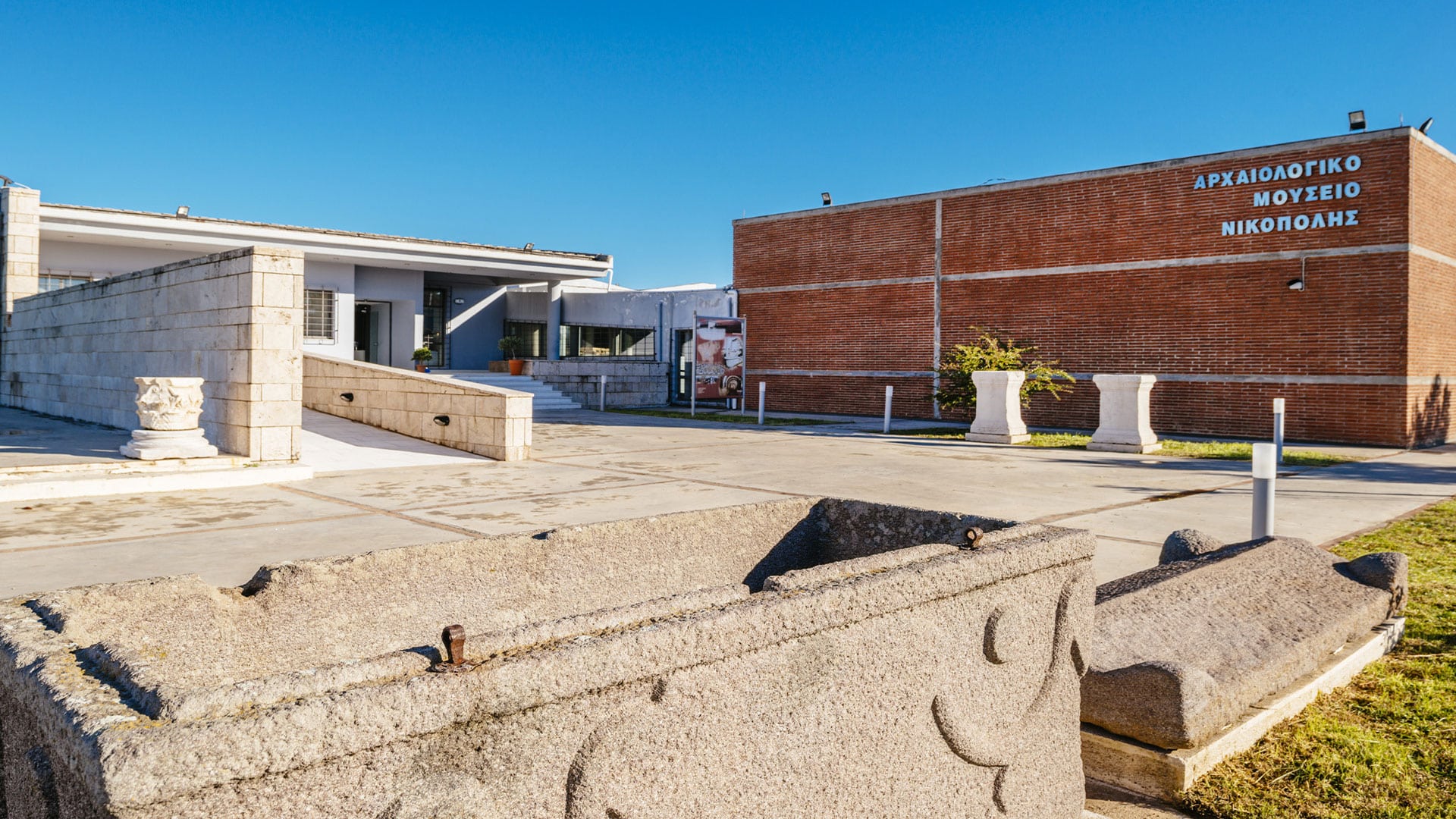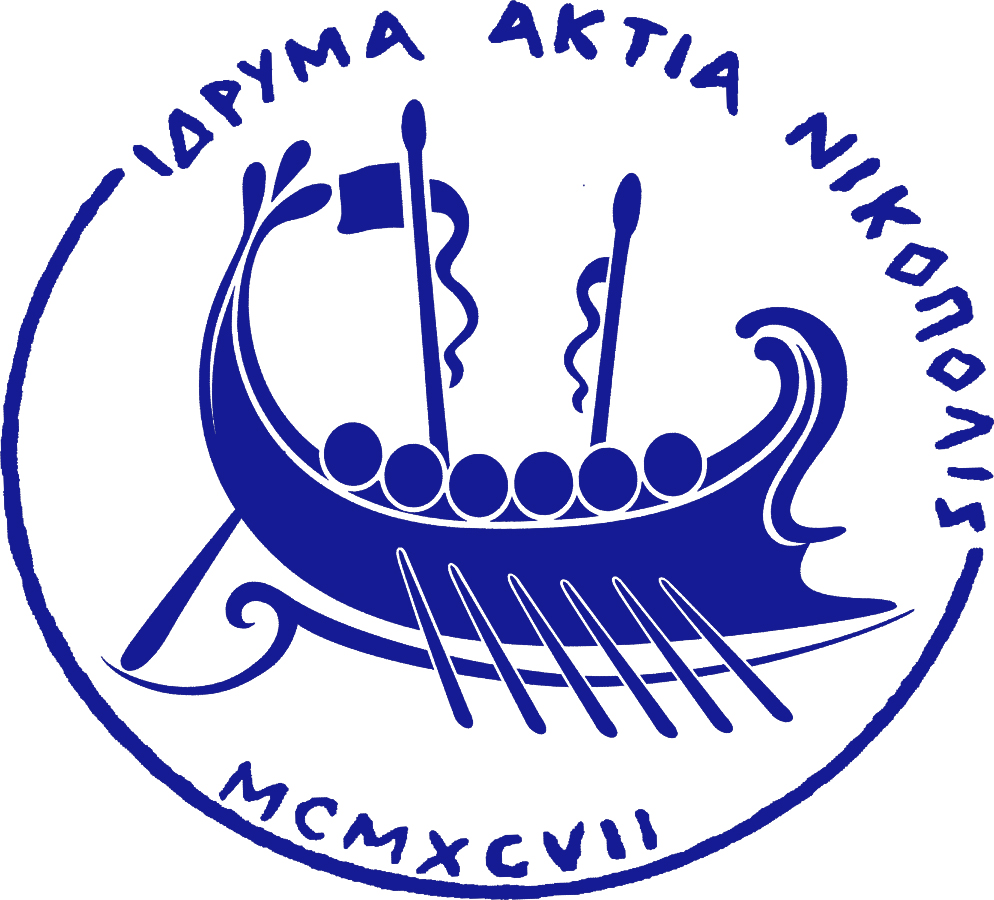Ancient Theater of Nikopolis

29°C
The Theater
When, where, how
It all began in 31 BC. To celebrate his victory in the naval battle of Actium at the mouth of the Ambracian Gulf, Octavian, subsequently Caesar Augustus, decided to found an entire new city. This was not an unusual occurrence at the time—Alexander the Great had been a frequent city founder! He named the new city Nikopolis, the City of Victory, so that everyone would remember his triumph.
Octavian did not stop at that. He claimed Apollo as his patron god and, for political and religious reasons, revived the local games that used to take place in the god’s honor a long time ago. At the Proasteion, Nikopolis’ sacred grove, Octavian provided for the construction of all the facilities needed for the new Actian games: a stadium, a gymnasium, two bathing complexes and a theater, as the games featured both athletic and musical contests.
The imposing Roman theater of Nikopolis was in continuous use between the 1st century BC and the 3rd century AD. Artists, spectators, the famous and the unknown, entire generations attended—even the notorious Roman emperor Nero himself, who “tried his hand” at music and tragedy and, naturally, won!
Then, the theater fell silent for centuries. Small-scale excavation began in the 1960s. More followed in the subsequent decades, reaching their peak in the early 21st century. Large-scale modern interventions and systematic archaeological research have multiple aims: to discover archaeological and historic aspects of the monument thus far unknown, protect it from further damage, as well as inaugurate a new era of use and fruitful interaction with the local and global community.
Greek and Roman theaters: a quick comparison
- Whereas Greeks had been constructing monumental theatres for centuries, Rome only acquired its first stone theatre under the second consulship of Pompey in 55 BC. The theatre faced a backlash from the ruling classes, who viewed theatrical performances as a sign of decadence.
- Greek theatres were built on natural slopes, whereas Roman theatres could also be constructed on level ground.
- Greek theatres were composed of three distinct parts: the seating area koilon (corresponding to the Roman cavea), the skene (the building behind the orchestra corresponding to the Roman scaenae) and the circular orchestra. Roman theatre joined these three areas in a single structure. The orchestra became semi-circular and was no longer used as the performance stage. Instead, performances moved to the proskenion or logeion (pulpitum).
- The architectural façade of the scaenae (stage house) of Roman theatres was elaborately decorated and sometimes rose to a height of four stories.
- Roman theatre performances were not confined to the arts. Spectators could satisfy their wildest instincts watching gladiatorial fights, wild animal fights and even simulated naval battles when the orchestra was flooded with water.
“Imagine the low hum growing louder as you approach: flute players and poets, music and recitation instructors anxiously rehearsing, the noise of the crowd milling about. Cheerful faces, laughter, conversations, speculation, as they wait for the spectacle to begin. Imagine the emperor approaching with his retinue.
Aulea Prementur, as a Roman might say. Raise the curtain!”
Media
The building at a glance
- At present, the orchestra is still covered by a deep layer of fill.
- The portion excavated so far preserves its multi-colored stone floor, which is paved with large calcareous and marble slabs.
- Nine meters in height survive of the once multi-story scaenae, the stage house behind the stage. Its height is nonetheless impressive, particularly when one considers that the orchestra floor is possibly three to four meters below the present day ground level.
- The scaenae frons, the architectural façade of the scaenae, was rectilinear and approximately 37 meters long. Like all Roman theatres, it must have been decorated with small shrines (aediculae) resting on columns, cornices (geisons) and marble panels. Statues of the gods possibly stood in niches, as suggested by inscriptions bearing the names of the goddesses Athena and Aphrodite, which a 19th century traveler spotted engraved on building material.
- At a distance of 2.70 meters to the south of the scaenae frons stood the proskenion, on which theatrical performances took place. Its depth is estimated at 8 meters and it is framed on either side by two rectangular stage house constructions known as the paraskenia.
- The cavea is the seating space of the theatre. It has a diameter of approximately 92 meters. It combines elements of Greek and Roman architecture: one part is constructed in the Greek manner, utilizing the natural slope of the hillside; another is built on stone substructures in the Roman manner.
- A Roman theatre had three tiers: the ima cavea (the lowest tier), the media cavea (middle tier) and the summa cavea (the upper tier). Each tier was allocated to a different social rank. The ima cavea, closest to the stage, was reserved for the upper echelons of society. Women were usually excluded, although women of noble rank were allowed access in some parts of the empire. The media cavea was reserved for men of various social ranks and the summa cavea for women, children and slaves.
- The upper part of the cavea is still visible today, along with the remnants of the substructures. The ima cavea (lowest tier) is not visible.
- The stone seating rows constructed in the upper part of the cavea were removed at some point in the past. Only two survive, and a seat still bears the name of its proprietor: KLEAHOS.
- On the retaining wall’s perimeter, stone plinths survive, embedded in the masonry and arranged in pairs. They carry circular through holes and circular depressions where poles would be mounted. A tent (velarium) would then be attached to the poles, covering the cavea and providing shade or shelter from the rain.


















